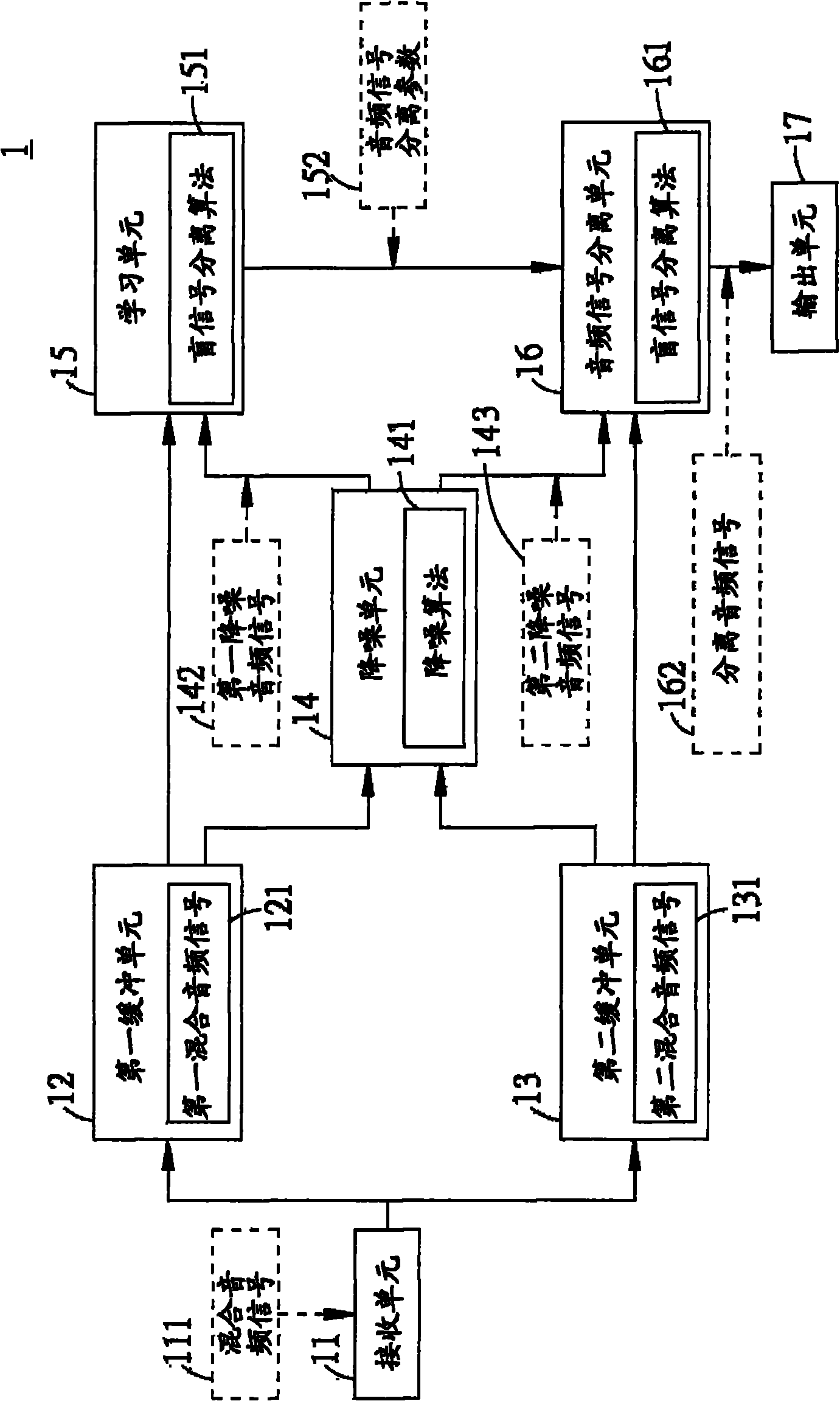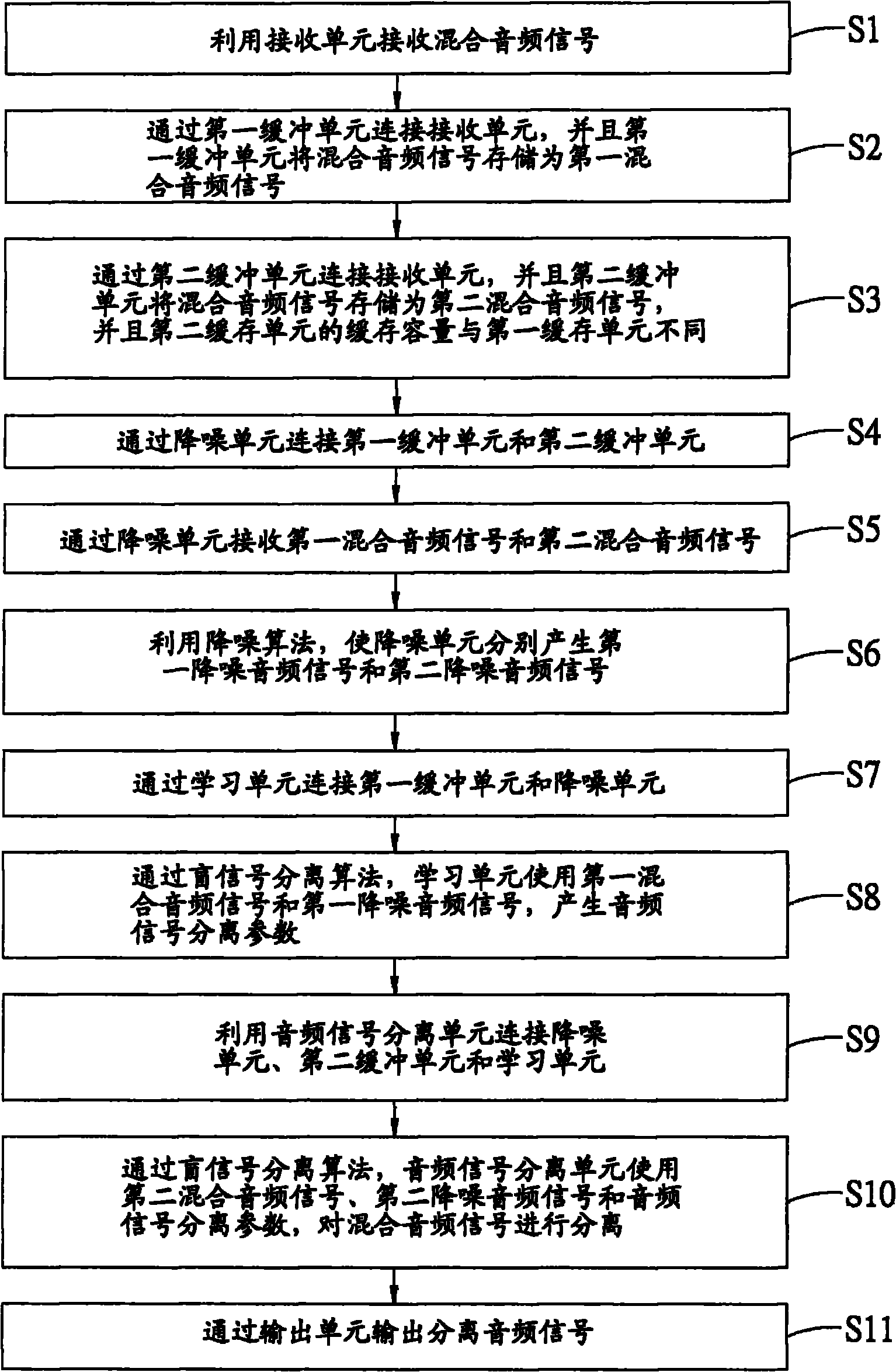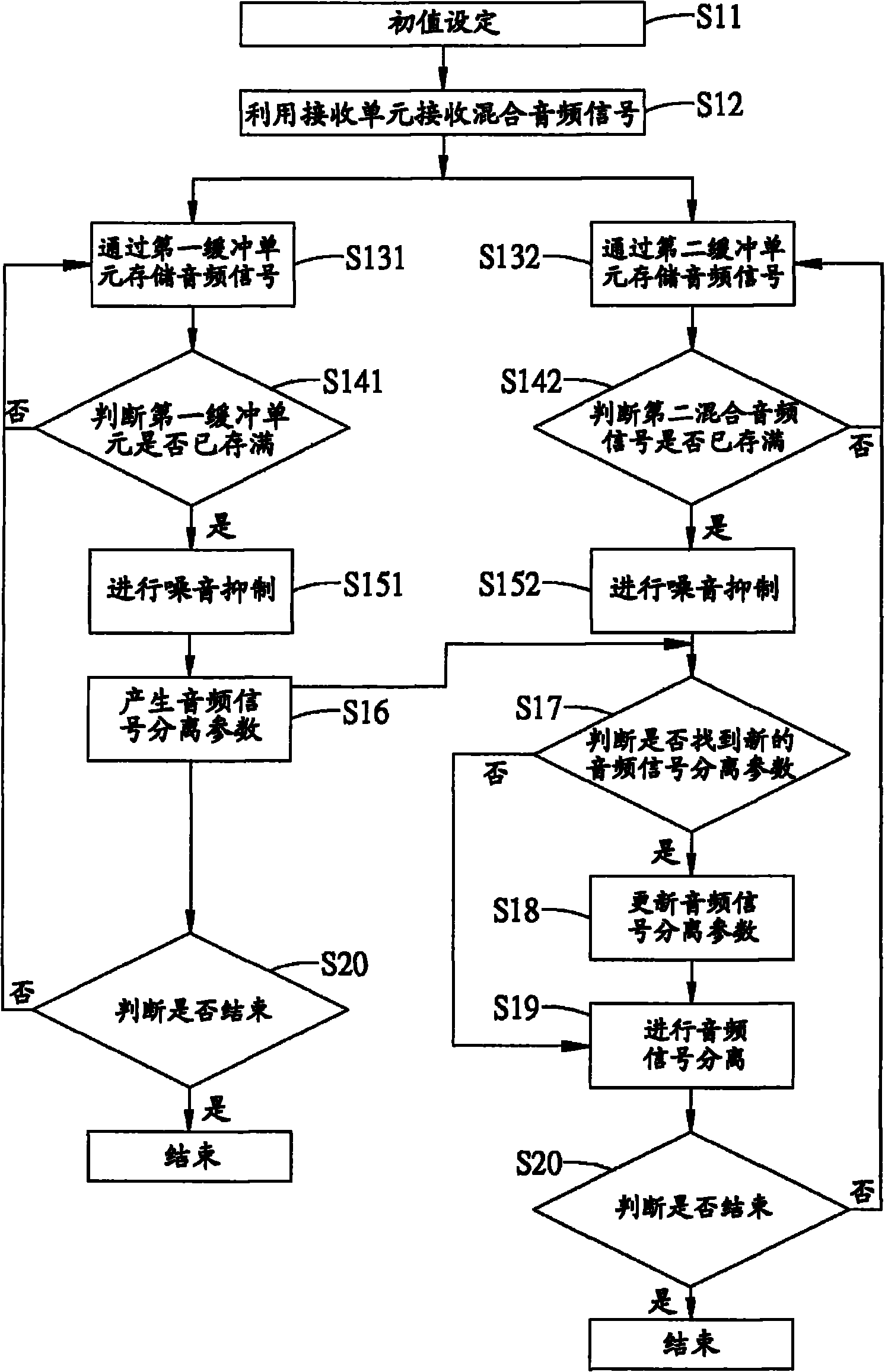Audio signal separating device and operation method thereof
A technology of audio signal and separation device, applied in voice analysis, transducer circuit, instrument, etc., can solve problems such as spatial aliasing, and achieve the effect of improving signal-to-noise ratio
- Summary
- Abstract
- Description
- Claims
- Application Information
AI Technical Summary
Problems solved by technology
Method used
Image
Examples
Embodiment Construction
[0032] refer to figure 1 , figure 1 is a schematic diagram of the audio signal separation device of the present invention. In the figure, the audio signal separation device 1 includes a receiving unit 11 , a first buffer unit 12 , a second buffer unit 13 , a noise reduction unit 14 , a learning unit 15 , an audio signal separation unit 16 and an output unit 17 .
[0033] The receiving unit 11 is a microphone for receiving the mixed audio signal 111 . The mixed audio signal 111 may be audio signals from multiple signal sources, and since only one microphone is used to receive the mixed signal, no spatial aliasing effect will be generated.
[0034] The first buffer unit 12 is connected to the receiving unit 11 and stores the mixed audio signal 111 as a first mixed audio signal 121 . The second buffer unit 13 is connected to the receiving unit 11, and stores the mixed audio signal 111 as the second mixed audio signal 131. The buffer capacity of the second buffer unit 13 is les...
PUM
 Login to View More
Login to View More Abstract
Description
Claims
Application Information
 Login to View More
Login to View More - R&D
- Intellectual Property
- Life Sciences
- Materials
- Tech Scout
- Unparalleled Data Quality
- Higher Quality Content
- 60% Fewer Hallucinations
Browse by: Latest US Patents, China's latest patents, Technical Efficacy Thesaurus, Application Domain, Technology Topic, Popular Technical Reports.
© 2025 PatSnap. All rights reserved.Legal|Privacy policy|Modern Slavery Act Transparency Statement|Sitemap|About US| Contact US: help@patsnap.com



